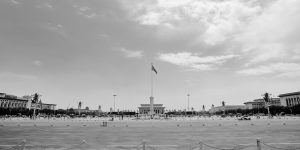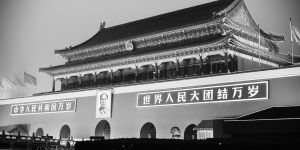What Happened On June 4th?
On June 4th of 1989, The Tiananmen Square Massacre resulted in thousands of deaths. More specifically, this demonstrated the Chinese government’s uncompromising stance on dissent. This massacre, driven by the regime’s fear of losing control, obliterated the aspirations of countless students and civilians who had gathered to demand political reform and freedom.
To fully grasp the gravity of June 4th, one must first understand the months of fervent activity that preceded it. The late 1980s in China were a period of economic reform under the guidance of Deng Xiaoping. While these reforms had spurred economic growth, they also led to widespread corruption, inflation, and a disparity between the rich and the poor. The Chinese populace, particularly the students, began to voice their discontent, calling for political reform, freedom of speech, and greater accountability from the government.
The death of Hu Yaobang, a former Communist Party leader sympathetic to the students’ cause, in April 1989 served as the catalyst for the demonstrations. Students gathered in Tiananmen Square to mourn Hu’s passing, but the vigil soon transformed into a broader protest against the regime’s rigidity. As days turned into weeks, the number of demonstrators swelled, with estimates suggesting that up to a million people congregated in the square at the movement’s peak.
Government Crackdown
Initially, the Chinese government adopted a conciliatory approach, engaging in dialogue with the protesters. However, as the protests continued and the demands became more insistent, the government’s patience waned. By late May, martial law had been declared in Beijing, and troops were mobilized to enforce order. Despite this, the demonstrators remained undeterred, buoyed by a sense of solidarity and a belief in their cause.

The tension reached a breaking point in the early hours of June 4th, when troops, backed by tanks and armored vehicles, began their advance towards Tiananmen Square. The crackdown was brutal and unyielding. Soldiers fired live ammunition into the crowds, indiscriminately targeting anyone in their path. Eyewitness accounts describe scenes of chaos and carnage, with bodies strewn across the square and the surrounding streets. The iconic image of a lone protester, known as “Tank Man,” standing defiantly in front of a column of tanks, has become a symbol of the unyielding human spirit in the face of oppression.
Counting The Dead
The exact number of casualties remains a contentious issue. The Chinese government, to this day, maintains that around 200 to 300 people were killed. However, independent estimates suggest that the death toll was much higher, ranging from several hundred to several thousand. The Chinese Red Cross initially reported 2,600 deaths, though they later retracted the statement under government pressure.
In the immediate aftermath, the Chinese government sought to erase all evidence of the massacre. Hospitals were instructed not to release information on the dead and injured, while families of the victims were often coerced into silence. The state-controlled media portrayed the crackdown as a necessary action to quell a “counterrevolutionary riot,” a narrative that persists in China to this day.
Internationally, the massacre was met with widespread condemnation. Economic sanctions and arms embargoes were imposed by Western nations, and China’s human rights record came under intense scrutiny. However, the global outrage did little to alter the Chinese government’s stance. The Communist Party tightened its grip on power, implementing widespread arrests and purges to prevent any resurgence of dissent.

The Voices Of The Fallen
Fang Zheng, a student who lost both his legs to a tank during the crackdown, has become a symbol of the enduring struggle for justice and truth. Despite the physical and emotional scars, Fang and others like him continue to advocate for recognition of the massacre and the establishment of democratic reforms in China.
One cannot overlook the stories of the “Mothers of Tiananmen,” a group of women who lost their children during the massacre and have since fought tirelessly for accountability and transparency. Their persistence, despite facing harassment and surveillance from the state, embodies the resilience of the human spirit in the quest for justice.
Silencing History
Today, the events of Tiananmen Square on June 4th are heavily censored within China, with any mention of the massacre scrubbed from textbooks and the internet. The Chinese Communist Party’s narrative remains one of denial and repression, an effort to maintain control over the historical narrative.
Every year, on June 4th, vigils are held around the world to commemorate the victims of the Tiananmen Square Massacre. In Hong Kong, until recent years, thousands would gather in Victoria Park, lighting candles and chanting slogans of remembrance and resistance. Despite the Chinese government’s efforts to suppress these commemorations, the spirit of Tiananmen lives on.





